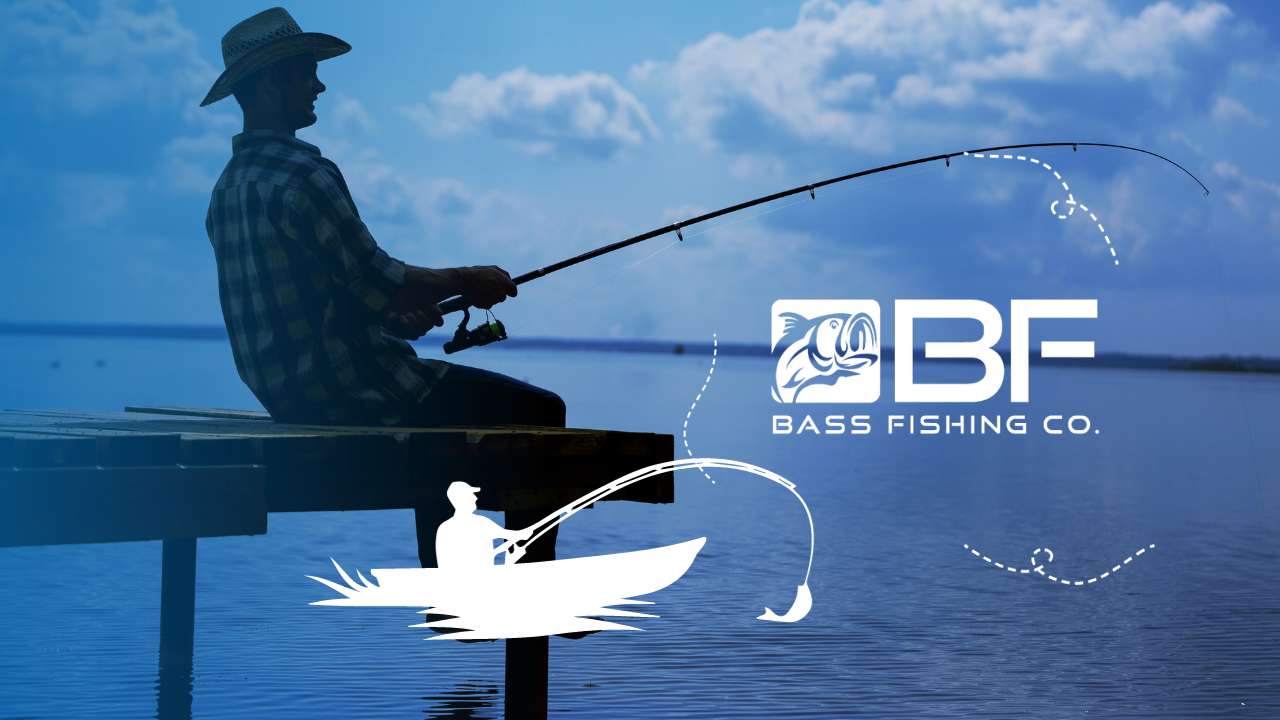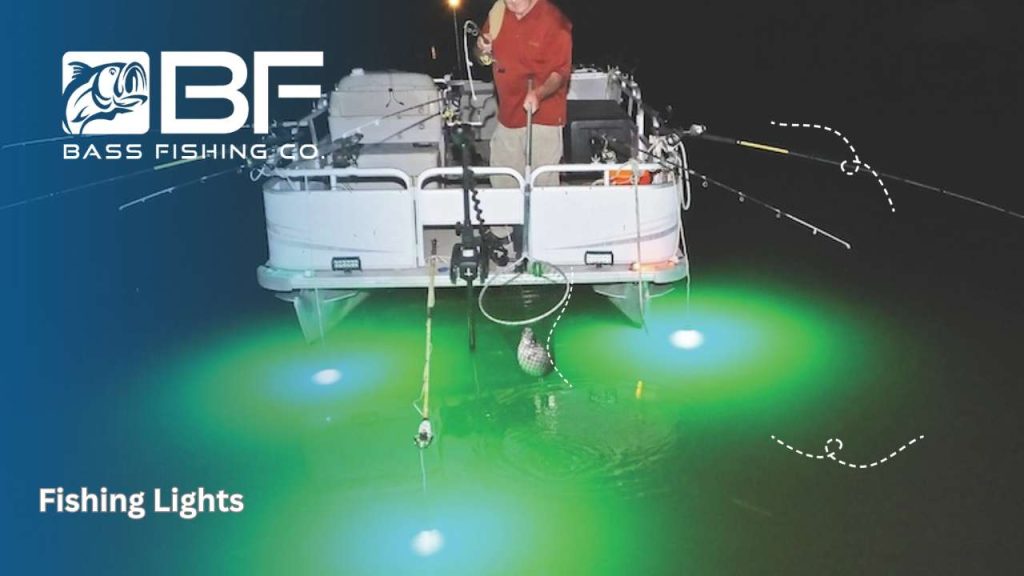Free Shipping over $50+ Order..

Guide to Crappie Fishing: Best Times, Techniques, and Tips
If you’re an avid angler, crappie fishing is a pursuit that can be incredibly rewarding. These scrappy little fish, also known as speckled perch or papermouths, are found throughout North America and are highly sought after for their delicious meat and challenging behavior. To make the most of your crappie fishing adventures, it’s essential to understand the best times to fish, the right techniques, and the critical factors that affect your success. In this comprehensive guide, we’ll explore everything you need to know about crappie fishing.
1. Understanding Crappie

1.1 Crappie Species: Black Crappie vs. White Crappie
Crappies come in two primary species: black crappie and white crappie. Understanding the differences between these species can help you target the right fish for your preferences.
- Black Crappie: These crappies are known for their irregular, dark speckling and a preference for cooler water. They tend to be more solitary.
- White Crappie: White crappie has a more uniform, light speckling pattern and can tolerate warmer water. They often form schools, making them more accessible to catch.
1.2 Where to Find Crappie
Crappies are versatile and can be found in various aquatic environments, including lakes, ponds, rivers, and reservoirs. Some key locations to search for crappie include:
- Main Lake Areas: Especially during early spring and late winter, crappie is often found in the main lake, particularly around submerged structures.
- Creek Channels: These act as highways for crappie as they move between shallow and deep water, making them prime spots for fishing.
- Shallow Flats: In the early spring and late fall, crappie move to shallower waters, especially during their spawning season.
- Deep Water: During the warmer months, crappie can be located in deeper water, often relating to underwater structures.
2. The Best Times to Fish for Crappie
2.1 Early Spring Crappie Fishing
Early spring is an exciting time for crappie anglers. As water temperatures begin to rise, crappie becomes more active, making it one of the best times to fish. Here’s what you need to know:
- Water Temperatures and Crappie: When the water temperature hovers around 50-55°F, crappie move from their deeper winter haunts to shallower water in preparation for spawning.
- Best Way to Catch Crappie: Use live bait, such as minnows, around submerged structures like brush piles and fallen trees in 5-10 feet of water.
- Good Times for Fishing: Early morning and late evening are prime times for crappie bites during this season.
2.2 Late Spring and Spawning Season
Late spring marks the crappie spawning season, a time when they move into even shallower water to reproduce. This period offers some excellent fishing opportunities:
- Warmer Water: As water temperatures reach the 60-68°F range, crappie gather near the shoreline for spawning.
- Target Crappie: Focus on shallow areas with sandy or gravel bottoms, where crappie creates their nests.
- Effective Baits: Use small jigs or live minnows to entice spawning crappie.
2.3 Summer Months and Warmer Water
During the summer months, crappie transition to deeper water as they seek cooler temperatures. Here’s how to catch them during this time:
- Warmer Water Temperatures: As the water heats up, crappie move into deeper water, often hovering around 15-25 feet.
- Fish Finders: Consider using fish finders to locate schools of crappie in open water.
- Bigger Fish: Summer months can yield larger crappie, making it a great time for big catches.
2.4 Late Summer to Early Fall
As summer turns to fall, crappie gradually returns to shallower areas, creating another excellent fishing window:
- Transition Period: Crappies begin moving from deep water to shallower flats as the water cools down.
- Small Baitfish: These areas are often rich in small baitfish, which attract crappie.
- Trolling Motor: A trolling motor can help you cover more ground and find active crappie.
2.5 Late Fall and Winter Crappie Fishing
Late fall and early winter present unique challenges for crappie anglers, but it’s still possible to catch them:
- Cold Days: On cold days, crappie often move to slightly deeper water, typically around 10-20 feet.
- Full Moon: Crappies can be more active during a full moon, so plan your trips accordingly.
- Small Crankbaits: Use small crankbaits and jigs to mimic the movements of the small baitfish crappie are feeding on.
3. Factors Affecting Crappie Activity
3.1 Water Temperatures and Crappie
Understanding the relationship between water temperatures and crappie behavior is crucial for successful fishing:
- Cold Water: Crappie are less active in cold water, so adapt your techniques when the water is below 50°F.
- Warmer Water: Warmer water temperatures trigger crappie activity, especially during the spawning season.
3.2 Weather Patterns and Cold Fronts
Weather patterns, including cold fronts, can have a significant impact on crappie fishing:
- Cold Fronts: After a cold front, crappie may be less active. However, they can become more active before the front arrives.
- Sunny Days: Crappies tend to move to deeper water on sunny days, so fishing deeper may be more productive.
3.3 Water Clarity and Crappie Behavior
Water clarity affects how crappie behaves and where they can be found:
- Clear Water: In clear water, crappie may be more cautious, so use lighter lines and smaller jigs.
- Clearer Water: Crappies might be more comfortable in slightly murkier water, allowing for a broader range of techniques.
3.4 Water Levels and Their Impact
Water levels in your fishing spot can change crappie behavior:
- High Water: When water levels rise, crappie often move into flooded areas to feed.
- Low Water: During low water conditions, crappie may concentrate around submerged structures.
4. Crappie Fishing Techniques and Tips

4.1 Choosing the Right Time of Day
Timing is everything in crappie fishing. Depending on the season and weather, crappie can be more active at different times of day:
- Early Morning: Crappies are often most active in the early morning when they’re feeding.
- Late Evening: Sunset is another prime time for crappie fishing.
- Night Fishing: In warmer months, consider night fishing for crappie, especially if the days are scorching.
4.2 Selecting the Best Fishing Gear
Choosing the right gear is crucial for crappie fishing success:
- Light Line: Use a light fishing line, typically a 4-8 lb test, for more natural bait presentation.
- Rod Tip: A sensitive rod tip helps detect subtle bites, especially when using small jigs.
- Spinning Reel: Spinning reels are popular for crappie fishing due to their versatility.
4.3 Best Baits and Lures for Crappies
Selecting the appropriate bait or lure can make a significant difference in your catch rate:
- Live Minnows: Live minnows are a tried-and-true crappie bait, especially during the colder months.
- Small Jigs: Tiny jigs in various colors can mimic small baitfish and trigger crappie strikes.
- Small Crankbaits: These can be effective, especially during late fall and winter.
4.4 Understanding the Water Column
Crappies can be found at different depths, and understanding the water column is essential:
- Vertical Jigging: Drop your bait to various depths until you locate an active crappie.
- Jig Fishing: Jigging is a versatile technique that allows you to control the depth of your lure.
- Fish Finders: Utilize fish finders to locate schools of crappie in open water.
4.5 Locating Crappie: Fish Finders and More
Finding crappie can be a challenge, but technology can help:
- Fish Finders: Modern fish finders can pinpoint the exact location of crappie schools.
- Depth Finder: A depth finder helps you determine the water depth, making it easier to find crappie at the right level.
4.6 Effective Crappie Fishing Methods
Different fishing methods can be applied to catch crappie effectively:
- Jig Fishing for Crappie: Jigging can be highly productive when targeting suspended crappie in deeper water.
- Spider Rigging: This method uses multiple rods to cover a wider area and locate crappie schools.
- Vertical Jigging: When crappie are stacked in the water column, vertical jigging can be an efficient method.
- Ice Fishing for Crappie: During the winter, ice fishing for crappie is a thrilling and rewarding experience.
5. Specialized Techniques for Crappie Anglers
5.1 Jig Fishing for Crappie
Jig fishing is a versatile and popular technique among crappie anglers. Here’s how to make the most of it:
- Lure Selection: Use small jigs in various colors to match the local baitfish.
- Vertical Jigging: When crappie are suspended at different depths, vertical jigging is effective.
- Jig Head Weight: Adjust the weight of the jig head based on water depth and wind conditions.
5.2 Spider Rigging
Spider rigging is a technique where multiple rods are set up in holders, allowing you to cover more ground:
- Multiple Rods: Set up 4-8 rods, each at a different depth, to locate crappie schools.
- Trolling Motor: A trolling motor helps you move slowly and control your position.
- Live Minnows: Using live minnows on each rod can be highly effective.
5.3 Vertical Jigging
Vertical jigging is a method for catching crappie when they’re stacked in the water column:
- Depth Finder: Use a depth finder to identify the exact depth where crappie is suspended.
- Jigging Motion: Drop your jig to the desired depth and jig it upward, mimicking the movements of baitfish.
- Slow and Steady: Maintain a consistent, slow jigging motion to entice crappie.
5.4 Ice Fishing for Crappie
Ice fishing for crappie is a unique and challenging pursuit:
- Safety First: Ensure the ice is thick enough for safe ice fishing.
- Tip-Ups: Use tip-ups or ice fishing rods to present your bait at various depths.
- Live Bait: Live minnows or wax worms are excellent choices for ice fishing.
6. The Best Places to Catch Crappie
6.1 Main Lake Crappie Fishing
Main lake areas are often prime spots for crappie, especially during the early spring and late winter:
- Submerged Structures: Look for underwater structures like brush piles and fallen trees where crappie gather.
- Water Depth: Crappies can be found at various depths, so use your fish finder to locate them.
6.2 Creek Channels and Open Water
Creek channels act as highways for crappie as they move between shallow and deep water:
- Migration Routes: Fish these channels during the crappie’s seasonal movements.
- Fish Finders: Utilize fish finders to locate schools of crappie in open water.
6.3 Shallow Flats and Brush Piles
Shallow flats and brush piles are productive areas during certain seasons:
- Early Spring: Crappie move to shallow flats as the water warms up.
- Cover: Brush piles offer protection and food for crappie.
6.4 Deep Water and Underwater Structures
During the warmer months, crappie can be found in deeper water and around underwater structures:
- Deeper Water: Target depths of 15-25 feet for summer crappie.
- Submerged Trees: Crappie often relate to submerged trees and artificial structures.
7. Optimizing Your Approach
7.1 Live Bait vs. Artificial Lures
Choosing between live bait and artificial lures depends on your preferences and the conditions:
- Live Bait: Live minnows and other baitfish can be highly effective, especially during colder months.
- Artificial Lures: Small jigs and crankbaits are versatile options for triggering crappie strikes.
7.2 The Role of Light Line and Tiny Jigs
Using light lines and small jigs is essential for a natural presentation:
- Light Line: A light fishing line, typically 4-8 lb test, is less visible in clear water.
- Tiny Jigs: Use small jigs in various colors to match local baitfish.
7.3 The Right Rod and Reel Setup
Selecting the appropriate rod and reel is crucial for crappie fishing:
- Spinning Reel: Spinning reels are versatile and well-suited for crappie fishing.
- Sensitive Rod Tip: A sensitive rod tip helps detect subtle bites, especially with small jigs.
7.4 Slip Bobbers and Trolling Motors
Slip bobbers and trolling motors can enhance your fishing experience:
- Slip Bobbers: These can help you control the depth of your bait presentation.
- Trolling Motors: A trolling motor allows for precise boat positioning and covering more water.
8. Fine-Tuning Your Crappie Fishing Skills
8.1 Adapting to Different Depths
Crappies can be found at various depths, so adapt your techniques accordingly:
- Vertical Jigging: For suspended crappie, use vertical jigging to reach different depths.
- Jigging Depth: Vary your jigging depth until you locate an active crappie.
8.2 Fishing in Clear and Clearer Water
Water clarity impacts your approach, and it’s essential to adapt:
- Clear Water: Use lighter lines and smaller jigs in clear water to avoid spooking crappie.
- Clearer Water: In slightly murkier water, you have more flexibility in lure choice.
8.3 Night Fishing for Crappie
Night fishing can be highly productive, especially during the warmer months:
- Lights: Illuminate your boat with lights to attract insects, which, in turn, attract crappie.
- Live Bait: Use live minnows under the lights to entice feeding crappie.
8.4 Fishing During a Full Moon
A full moon can affect crappie behavior:
- Increased Activity: Crappies may be more active during a full moon, so plan your trips accordingly.
- Brighter Nights: Fishing at night under a full moon is more comfortable and productive.
9. Seasonal Considerations
9.1 Northern States vs. Warmer Climates
Crappie behavior can differ significantly between northern states and warmer climates:
- Northern States: In northern regions, crappie may have a shorter active season due to colder winters.
- Warmer Climates: In warmer climates, crappie can be active year-round, providing more fishing opportunities.
9.2 Spring vs. Fall Crappie Fishing
Spring and fall offer unique challenges and rewards for crappie anglers:
- Spring: Spring is a fantastic time for crappie fishing, especially during the spawn.
- Fall: Late fall can also yield excellent catches as crappie transition back to shallower water.
10. Additional Tips for Success
10.1 Being Patient and Observant
Patience and observation are key to successful crappie fishing:
- Study Behavior: Observe crappie behavior, such as their feeding patterns and movements.
- Stay Patient: Be patient, as crappie can be selective and cautious.
10.2 The Importance of Water Clarity
Understanding water clarity is crucial for making the right bait and lure choices:
- Water Clarity: Pay attention to water clarity and adapt your approach accordingly.
- Color Selection: Use lure colors that match the local forage and water conditions.
10.3 What Do Crappies Eat?
Knowing what crappie eat in your area can help you choose the right bait and lures:
- Baitfish: Crappies primarily feed on small baitfish, so match your lures to local forage.
- Insects and Invertebrates: In some situations, crappie may also feed on insects and invertebrates.
10.4 Understanding the Strike Zone
The strike zone is the area where crappie are most likely to strike at your bait:
- Jigging Depth: Experiment with different depths to find the crappie’s preferred strike zone.
- Lure Presentation: Vary your jigging motion and lure presentation to entice strikes.
11. Crappie Fishing FAQ
11.1 Do Crappie Spawn?
Yes, crappie do spawn. They typically spawn in the late spring when water temperatures are around 60-68°F. During this time, they move into shallower water, often near shoreline structures.
11.2 What’s the Best Time of Year to Catch Crappie?
The best time of year to catch crappie varies depending on your location. In general, early spring and late fall are productive times. Spring is especially good for spawning crappie, while fall is ideal for crappie transitioning to shallower water.
11.3 How to Target Bigger Crappie?
To target bigger crappie, consider using larger baits, such as bigger minnows or larger profile jigs. Fish in areas where bigger crappie are likely to congregate, such as around submerged structures or deeper water.
In summary, crappie fishing offers a thrilling and rewarding angling experience. Understanding the best times to fish, the right techniques and the factors influencing crappie behavior is essential for success. Whether you’re a seasoned crappie angler or a beginner, this comprehensive guide equips you with the knowledge and strategies to enhance your crappie fishing adventures. Remember to adapt your approach based on seasonal changes and local conditions, and always be patient and observant to maximize your catch. Happy crappie fishing!



